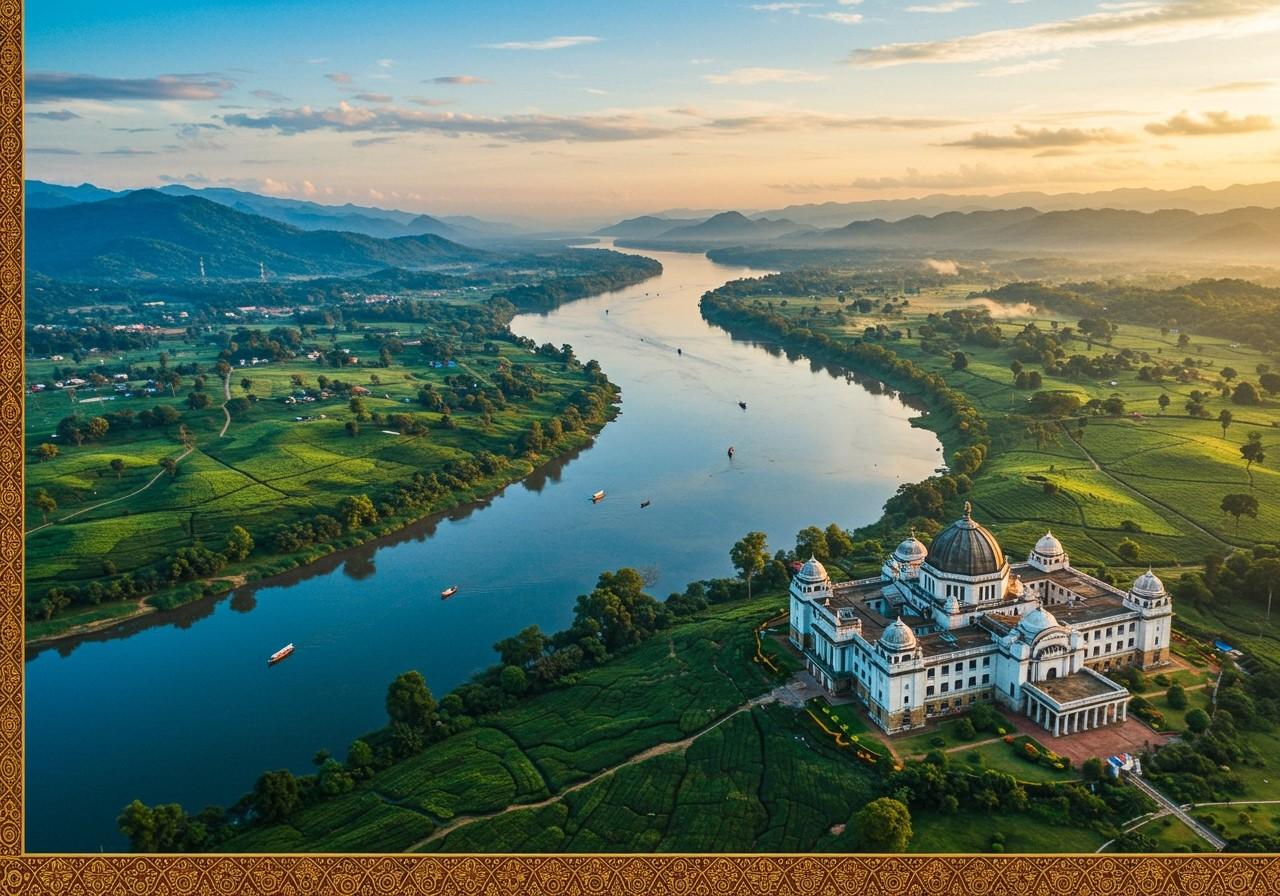
Western Assam, a region abundant in cultural heritage and natural beauty, forms a vital part of Assam. Known for its diverse ethnic communities, picturesque landscapes, and important historical sites, Western Assam offers a unique blend of tradition and modernity. This article delves into the geographical and administrative facets of Western Assam, emphasizing its districts, boundaries, and distinctive characteristics.
Geographic Overview of Western Assam
Western Assam’s strategic location and diverse geography are key features. The region encompasses various districts, each with distinct topography and cultural significance. The Brahmaputra River, a lifeline of the region, flows through this area, enriching its soil and supporting agriculture. Numerous wildlife sanctuaries and national parks contribute to the region’s rich ecological diversity.
The climate ranges from tropical monsoon in the lowlands to subtropical in the higher altitudes, influencing agriculture and lifestyles. The proximity to Bhutan and the Eastern Himalayas further enhances its geographical importance. The varied terrain, including plains, hills, and riverine areas, presents diverse opportunities and challenges for development.
Administrative Structure
Western Assam’s administrative structure aims to ensure efficient governance and development. The region is divided into several districts, each overseen by a Deputy Commissioner (DC) responsible for administrative functions and development projects. These districts include Kamrup, Bongaigaon, Goalpara, Barpeta, Dhubri, and Kokrajhar.
Further division into circles and blocks facilitates local governance. The Panchayati Raj system plays a vital role in rural administration, empowering local bodies in decision-making for development projects and welfare schemes. Various government departments collaborate to implement policies related to health, education, infrastructure, and social welfare.
Western Assam Districts Map
As per search engine results, Assam is divided into 35 administrative districts, color-coded by division: Green for Lower Assam, Purple for North Assam, Yellow for Central Assam, Orange for Barak Valley, and Red for Upper Assam. Western Assam includes several of these districts. For a detailed and interactive map of Assam districts, you can explore online resources.
- Kamrup: Headquartered in Guwahati, a major commercial and cultural hub, Kamrup district is a significant center for trade and cultural activities. It is also a key transportation hub for the region.
- Bongaigaon: Known for industrial development, particularly in the petroleum and petrochemical sectors, Bongaigaon plays a crucial role in Assam’s economy. It is also a growing urban center.
- Goalpara: Rich in historical sites like Surya Pahar, Goalpara offers a glimpse into Assam’s past. It combines historical significance with natural beauty.
- Barpeta: Famous for its vibrant cultural festivals and the Barpeta Satra, a center for Vaishnavite culture, Barpeta is a hub of religious and cultural activities. The Satra attracts devotees and tourists alike.
- Dhubri: A melting pot of cultures and home to the Dhubri Gurdwara, a key religious site, Dhubri showcases Assam’s diverse religious landscape. It is located at the confluence of the Brahmaputra and Gadadhar rivers.
- Kokrajhar: Part of the Bodoland Territorial Region (BTR), Kokrajhar is known for its ethnic diversity and socio-political significance. It is an important administrative center within the BTR.
Each district faces unique challenges and opportunities, addressed through specific administrative measures and development programs.
Western Boundary of Assam
Assam’s western boundary is demarcated by borders with West Bengal and Meghalaya, and internationally with Bangladesh. This strategic location influences trade, security, and cultural exchange. The border areas are characterized by vibrant cross-border trade and cultural interactions, contributing to the economic vitality of the region.
Security forces and customs offices ensure smooth cross-border activities while maintaining security. The border regions also witness a unique cultural fusion, blending influences from neighboring areas with local traditions. Development initiatives focus on improving infrastructure, connectivity, and border management.
Cultural and Socio-Economic Aspects
Western Assam is a melting pot of diverse ethnic communities, including Bodos, Assamese, Bengalis, Rabhas, and many others. This diversity is reflected in the region’s festivals, languages, and traditional practices. The economy is primarily agrarian, with rice, jute, tea, and betel nut as major crops.
Handloom and handicrafts, particularly Assamese silk and bamboo crafts, contribute significantly to the local economy. Industrial growth is notable in districts like Bongaigaon and Kamrup. Education and healthcare are key focus areas, with institutions striving to improve the quality of life.
Explore Assamese Spiritual Heritage
Discover Assam’s Sacred Sites
Challenges and Opportunities
Western Assam faces challenges such as flood management, ethnic conflicts, and economic disparities. Floods caused by the Brahmaputra River lead to displacement and loss of livelihood. Ethnic conflicts can impact socio-political stability. However, the region is also ripe with opportunities.
Its abundant natural resources, cultural heritage, and strategic location offer potential for tourism, trade, and investment. Government initiatives focus on sustainable development in infrastructure, education, healthcare, and economic diversification. Promoting agro-based industries, eco-tourism, and small-scale enterprises can boost the region’s economy. Collaborative efforts between the government, civil society, and local communities are crucial for addressing challenges and realizing opportunities.
Poojn.in, India’s largest online store for puja samagri and other religious items, caters to the diverse needs of Western Assam. Whether you need traditional Assamese items or items for other faiths, Poojn.in offers a wide selection and convenient delivery throughout the region. Shop now and experience the convenience of online shopping for your religious needs.
Conclusion
Western Assam is a region of immense geographical, administrative, and cultural importance. Its diverse landscapes, rich cultural heritage, and strategic location make it a unique part of Assam. Despite facing challenges, the region holds numerous opportunities for growth and development.
Effective governance, community collaboration, and sustainable initiatives are essential for harnessing these opportunities. By focusing on infrastructure, education, healthcare, and economic diversification, Western Assam can continue to flourish while preserving its rich traditions and embracing progress. The resilience and potential of Western Assam are a testament to the vibrant spirit and diversity of this region, promising a bright future for its people and culture.


